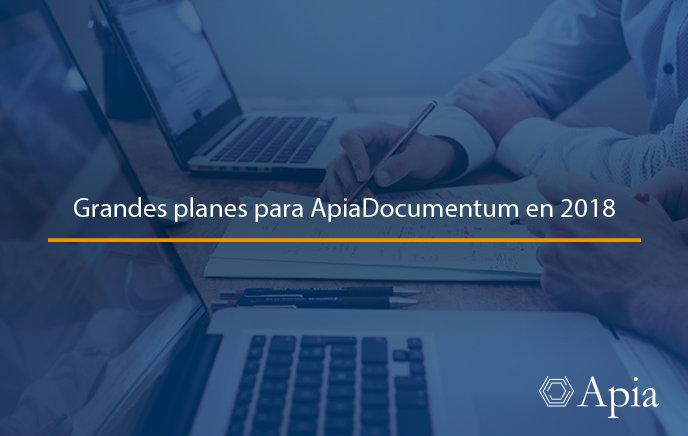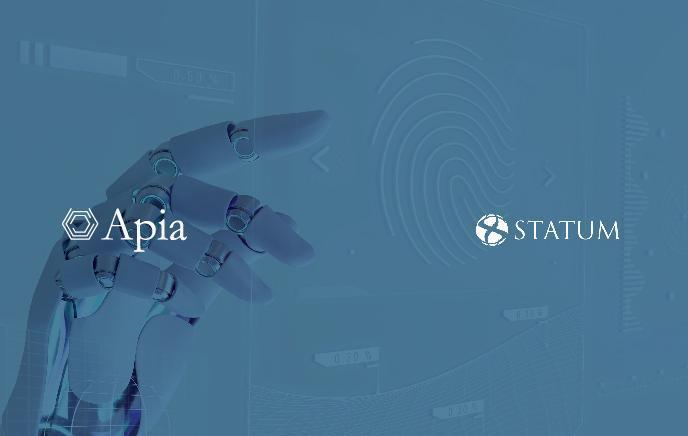Grandes planes para ApiaDocumentum en 2018
Resumen:
La herramienta se implementará en nuevos organismos y habrá una actualización masiva a la nueva versión.
Información:
El año 2017 cerró con un total de 25 organismos integrados al sistema de expediente electrónico ApiaDocumentum, producto desarrollado por STATUM. "Desde 2009 –año de inicio del proyecto con la incorporación del Ministerio de Industria, Energía y Minería–, la herramienta ha tenido un crecimiento importante a nivel de las funcionalidades y de la estabilidad", afirmó Gabriela Pérez, coordinadora de los proyectos de Expediente Electrónico en Agesic. En este tiempo se han procesado alrededor de dos millones de documentos en este soporte.
Para este año, Pérez confirmó que la Corte Electoral, la Oficina de Planeamiento y Presupuesto y el Ministerio de Economía y Finanzas se sumarán a la lista. "Estamos por empezar a trabajar", dijo.
Un buen año
Durante 2017, STATUM y Agesic trabajaron en conjunto para que los 25 organismos ejecuten la misma versión de la herramienta.
Según explicó Pérez, había un desfasaje de hasta tres versiones entre dependencias que, en algunos casos, correspondía a un atraso de hasta cinco años en materia de actualizaciones. "Era inmanejable", apuntó. "Que todos los organismos tengan la misma versión nos da mucha tranquilidad a la hora del soporte", añadió. Conseguir este logro permitió que ambas partes se plantearan el objetivo de una actualización masiva durante este año. "Esto nos permite mirar para adelante e ir a la versión 2.0 de ApiaDocumentum. Eso va a ser un hito para 2018", sostuvo Pérez.
La versión 2.0 se caracteriza por ofrecerle al usuario un diseño más amigable con una estética más similar a lo que se encuentra en un navegador web: funciones de pestañas, de calificación y selección de contenidos, filtros de consulta, generación de árboles de expedientes, etc.
Otros dos grandes resultados de 2017 fueron la estabilidad de la herramienta (el reporte de incidentes bajó "notoriamente") y nuevos servicios a la Plataforma de Interoperabilidad, entre ellos, la implementación de INDOC (Intercambio Documental), otro producto desarrollado por STATUM para enviar y recibir expedientes electrónicos.
"Tener la misma versión, interoperabilidad y estabilidad fueron las fortalezas de 2017 de Expediente Electrónico", afirmó Pérez.
Las fortalezas
ApiaDocumentum es una solución pensada para gestionar expedientes, documentos y flujos de trabajo soportados electrónicamente. Su objetivo es eliminar el soporte papel, mejorar la calidad del servicio y conseguir la transparencia y democratización de la información.
Gabriela Pérez destacó la sustentabilidad del sistema como uno de los puntos fuertes de ApiaDocumentum. "Con Apia vamos a la vanguardia en lo que tiene que ver con tecnología y necesidades", sostuvo.
En este sentido, Pérez enfatizó que la herramienta cuenta con todos los elementos que requiere el cumplimiento de la Ley Nº 18.381 de Acceso a la Información Pública; al tiempo que se adecuó rápidamente al algoritmo de encriptación AES de 256 bits y cuenta con firma digital para que los usuarios puedan identificarse manteniendo la autenticidad e integridad de sus datos. "ApiaDocumentum tiene eso: esa sustentabilidad y alguien que se ocupa de llevarla lo más cercano a lo último que hay a nivel tecnología y de legislación", concluyó Pérez.
La herramienta se implementará en nuevos organismos y habrá una actualización masiva a la nueva versión.
Información:
El año 2017 cerró con un total de 25 organismos integrados al sistema de expediente electrónico ApiaDocumentum, producto desarrollado por STATUM. "Desde 2009 –año de inicio del proyecto con la incorporación del Ministerio de Industria, Energía y Minería–, la herramienta ha tenido un crecimiento importante a nivel de las funcionalidades y de la estabilidad", afirmó Gabriela Pérez, coordinadora de los proyectos de Expediente Electrónico en Agesic. En este tiempo se han procesado alrededor de dos millones de documentos en este soporte.
Para este año, Pérez confirmó que la Corte Electoral, la Oficina de Planeamiento y Presupuesto y el Ministerio de Economía y Finanzas se sumarán a la lista. "Estamos por empezar a trabajar", dijo.
Un buen año
Durante 2017, STATUM y Agesic trabajaron en conjunto para que los 25 organismos ejecuten la misma versión de la herramienta.
Según explicó Pérez, había un desfasaje de hasta tres versiones entre dependencias que, en algunos casos, correspondía a un atraso de hasta cinco años en materia de actualizaciones. "Era inmanejable", apuntó. "Que todos los organismos tengan la misma versión nos da mucha tranquilidad a la hora del soporte", añadió. Conseguir este logro permitió que ambas partes se plantearan el objetivo de una actualización masiva durante este año. "Esto nos permite mirar para adelante e ir a la versión 2.0 de ApiaDocumentum. Eso va a ser un hito para 2018", sostuvo Pérez.
La versión 2.0 se caracteriza por ofrecerle al usuario un diseño más amigable con una estética más similar a lo que se encuentra en un navegador web: funciones de pestañas, de calificación y selección de contenidos, filtros de consulta, generación de árboles de expedientes, etc.
Otros dos grandes resultados de 2017 fueron la estabilidad de la herramienta (el reporte de incidentes bajó "notoriamente") y nuevos servicios a la Plataforma de Interoperabilidad, entre ellos, la implementación de INDOC (Intercambio Documental), otro producto desarrollado por STATUM para enviar y recibir expedientes electrónicos.
"Tener la misma versión, interoperabilidad y estabilidad fueron las fortalezas de 2017 de Expediente Electrónico", afirmó Pérez.
Las fortalezas
ApiaDocumentum es una solución pensada para gestionar expedientes, documentos y flujos de trabajo soportados electrónicamente. Su objetivo es eliminar el soporte papel, mejorar la calidad del servicio y conseguir la transparencia y democratización de la información.
Gabriela Pérez destacó la sustentabilidad del sistema como uno de los puntos fuertes de ApiaDocumentum. "Con Apia vamos a la vanguardia en lo que tiene que ver con tecnología y necesidades", sostuvo.
En este sentido, Pérez enfatizó que la herramienta cuenta con todos los elementos que requiere el cumplimiento de la Ley Nº 18.381 de Acceso a la Información Pública; al tiempo que se adecuó rápidamente al algoritmo de encriptación AES de 256 bits y cuenta con firma digital para que los usuarios puedan identificarse manteniendo la autenticidad e integridad de sus datos. "ApiaDocumentum tiene eso: esa sustentabilidad y alguien que se ocupa de llevarla lo más cercano a lo último que hay a nivel tecnología y de legislación", concluyó Pérez.





Jorge Aníbal Torres Castro Jun 20, 2018
Sin perjuicio de los objetivos aquí planteados los cuales se comparten, es necesario comunicar aspectos conceptuales en la operativa de Apia Documentum, en donde todos los Organismos poseedores de la herramienta operen con los mismos criterios, ejemplo respetar un único número de expediente cuando circule transversalmente por la Administración..